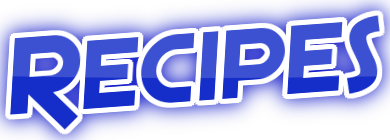
Ethereum was the first blockchain that truly introduced the concept of smart contracts. It also started the blockchain technology second generation. Blockchain also offers better security with the help of the cryptography used in making sure the data is secure. It’s a decentralized approach also means that the platform or network cannot be shut down or modified by just one single entity. The fact that even the highest secure, centralized entity can be hacked makes blockchain a very good security system as it doesn’t require a centralized approach.
While blockchain data doesn’t natively include information about where a transaction occurs, Day is personally exploring how BigQuery ML might be leveraged to reveal transaction locations. Something that might help along the adoption of blockchain in the enterprise is Microsoft’s Coco Framework, announced August 2017. Everledger and Maureen Downey announced the ‘Chai Wine Vault’ in late 2016.
Who invented Blockchain?
Other uses Blockchain technology can be used to create a permanent, public, transparent ledger system for compiling data on sales, tracking digital use and payments to content creators, such as wireless users or musicians.
If one of the small units of the chain is removed, the chain breaks, alerting everyone that something is wrong. Blockchain depends on a consensus method to verify and write transactions on the blockchain. Blockchain technology and users’ constant review of the system have made it difficult to hack bitcoins. A 51% attack refers to an attack on a blockchain—most commonlybitcoins, for which such an attack is still hypothetical—by a group of miners controlling more than 50% of the network’s mining hash rate or computing power.

Now Kik is looking for a more elegant solution for their currency. First, the Stellar blockchain is being integrated alongside Ethereum so both can work in tandem and help scale up Kin. However, transactions on the Stellar blockchain still have a small cost that must be paid in Stellar Lumens. To bring that cost down to zero, Kik is forking the Stellar blockchain to run their own, almost identical version of the code.
How To Become A Blockchain Expert
To create a blockchain network, each network member needs to manually provision hardware, install software, create and manage certificates for access control, and configure networking components. Once the blockchain network is running, you need to continuously monitor the infrastructure and adapt to changes, such as an increase in transaction requests, or new members joining or leaving the network. BlockApps CEO Kieren James-Lubin says that while Google was relatively late to publicly commit resources to blockchain, the company will benefit from watching from the sidelines as the cryptocurrency market collapsed in 2018. To help make up for that lost time James-Kiernen says his team is working “in the trenches” with Google to help their sales and pre-sales teams understand the value proposition of enterprise ethereum applications. While Day’s job as Google Cloud developer advocate puts him in a unique position to build bridges between the search giant and developers, he is not alone in his blockchain interest at the company.
How does a block chain work?
A Blockchain is a type of diary or spreadsheet containing information about transactions. Each transaction generates a hash. If a transaction is approved by a majority of the nodes then it is written into a block. Each block refers to the previous block and together make the Blockchain.
This way, a https://coinbreakingnews.info/blockchain/ network can be used to store documents, valuable digital assets, cryptocurrencies and more. As a user, all you need to do is make sure that you take proper care of your private keys — through which you can get access to your belongings on the assets online. Blockchain is a peer-to-peer network that relies on a decentralized approach. The absence of a centralized entity opens up a plethora of options for organizations that need trust, immutability, and transparency.
In the future, we can see blockchain being integrated into almost everything around us, including artificial intelligence and internet-of-things. Even though it might seem that blockchain use-cases are plentiful, it is hard to say that they are exhausted.
Who owns the Blockchain?
It collects more than 90 data points, including high resolution photography, records of ownership and storage to create a digital ‘thumbprint’ certified on the Ethereum. Danish shipping giant Maersk built blockchain technology based on Hyperledger to manage and track its tens of millions of shipping containers that traverse the oceans every year.
The technology could also be used to maintain and protect records of real estate ownership, titles, and more. The potential applications of smart https://coinbreakingnews.info/ contract technology are essentially limitless and could extend to almost any field of business in which contract law would normally apply.
- The words block and chain were used separately in Satoshi Nakamoto’s original paper, but were eventually popularized as a single word, blockchain, by 2016.
- Data in a blockchain ledger is public (at least to all miners) in order to enable verification, meaning that sensitive data is inherently nonprivate.
- In a world where cyber security has become a key issue for personal, corporate, and national security, Blockchain is a potentially revolutionary technology.
The solution has been developed on the open source Hyperledger Fabric platform. SAP is trialling a Cryptocurrency -based supply chain tracker designed to work for any farm-to-consumer or pharmaceutical suppliers.
Of course, while highly touted, smart contracts are not a magical substitute for old-fashioned diligence. Nonetheless, smart contracts remain one of the most exciting ways that blockchain technology has already extended beyond the cryptocurrency space and into the broader business world. Blockchain solutions can be permissioned (e.g. a Government run land registry) or permission-less (e.g. Bitcoin, where anyone can become a miner). Blockchain solutions can be private (e.g. a contract management system implemented in a pharmaceutical company), public (e.g. an asset backed cryptocurrency) or hybrid (e.g. a group of banks running a shared KYC platform). The IPFS is a distributed network of nodes which can query each other for information and then decide which bits of information they will store.
However, many investors don’t have a thorough understanding of what blockchain is or the best ways to invest in this exciting tech trend. Although blockchain was invented in 2008, it has gained publicity as a technology independent of Bitcoin only recently. Hence, there are not so many commercial companies with substantial experience that can provide you with accurate blockchain development estimates.
Going back to at least to September 2016, Google has reportedly filed more than 20 patents for blockchain-related technology, including one in 2018 for using a “lattice” of interoperating blockchains to increase security. And it’s not just Day who has been using the cryptocurrency data sets.
Blockchain is an emerging technology with a lot of things that can be improved in the near future. With innovations such as graph-based distributed ledger technology, it is important to understand that there are a lot of things to come for blockchain or DLT, in general. The second generation of blockchain technology introduced a new concept, known as smart contracts. With smart contracts, blockchain can now not only store information, but also automate agreements on blockchain.

So far, the largest group of users are coming from within Google itself. In March 2017 Google purchased data science collaboration startup Kaggle for an undisclosed amount. Comprising a community of data scientists, including Day, Kaggle is now hosting more than 500 bitcoin projects and 16 ethereum projects, many of which are for educational purposes. Perhaps unsurprisingly, Day’s role as customer zero means his interest in helping create the blockchain search features goes beyond theory.
Why do we need Blockchain?
It is an umbrella project which consists of multiple projects, including distributed ledgers, libraries, tools, and domain-specific projects. The Hyperledger greenhouse is big and consists of amazing projects, including the well known Hyperledger Fabric, Hyperledger Besu, and others.
Blockchain Technology:What Is It Good for?
So far, 16 companies have signed up to pilot the SAP Cloud Platform Blockchain technology, including Johnsonville, Naturipe Farms and Tate & Lyle. The software is primarily aimed at increasing security and safety in supply chains and decreasing the chance for fraud. With everything improving in terms of transparency, trust, immutability, security, and scalability — it is only time when blockchain technology will improve living standards. is an open-source blockchain project that is managed by The Linux Foundation.
The applications for blockchain and identity management are wide-ranging. For instance, blockchain could potentially be used to aid in maintaining voter information and ensuring proper functioning of the electoral process. Blockchain could be used to securely and efficiently transfer user data across platforms and systems.
#Bitcoin-Spotlight: read the best weekly Bitcoin think pieces
The Kik Points experiment had a transaction volume of approximately 300,000 transactions per day; far above what Ethereum can handle right now. To tackle this, much of the leg work for Kin originally happened off the Security. Blockchain makes it possible to build applications where multiple parties can execute transactions without the need for a trusted, central authority. Today, building a scalable blockchain network with existing technologies is complex to set up and hard to manage.




